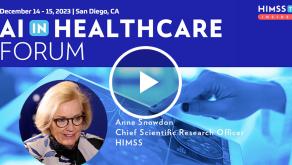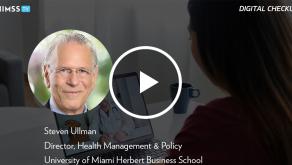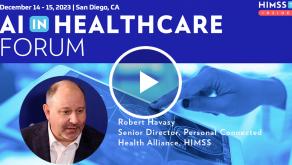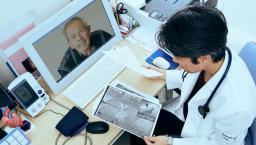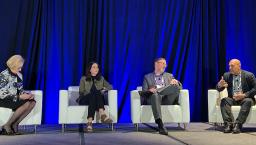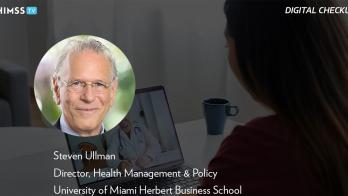Bon Secours transforms employee relationships with experience management tech
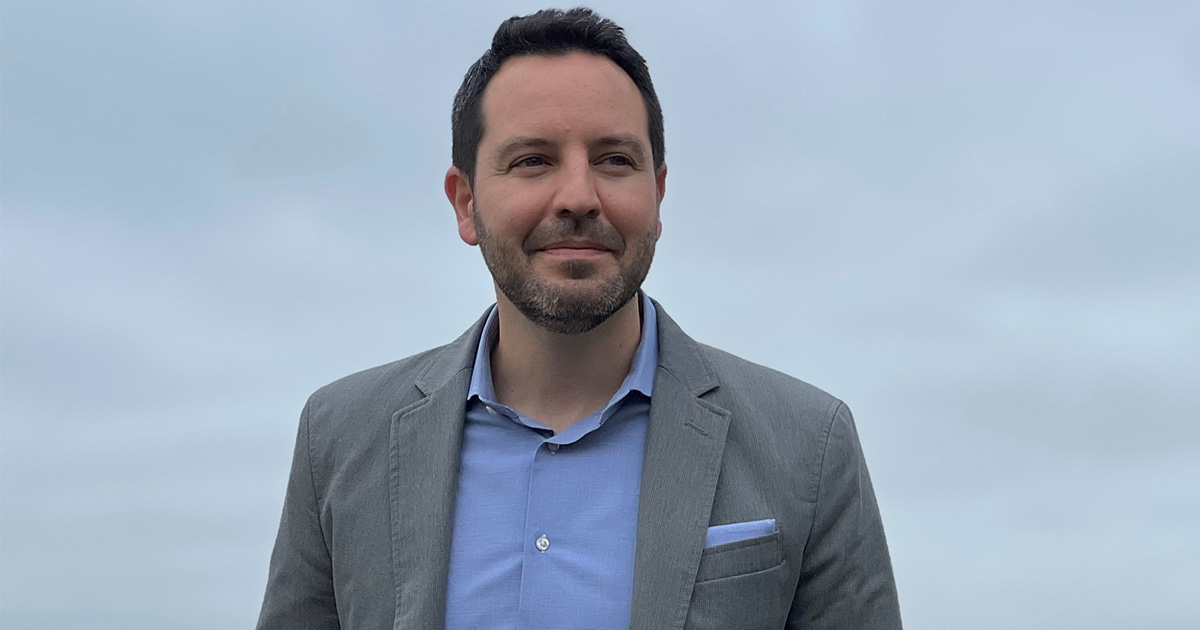
Joe Filigno, vice president of HR strategy and associate experience at Bon Secours Mercy Health
Photo: Bon Secours Mercy Health
In so many industries, experience is top priority. Consumers are tracked throughout their journey and across all interactions, and customer experiences are personalized and timely. Why should healthcare be any different?
THE PROBLEM
The human resources team at Bon Secours Mercy Health was looking to replicate that tracking approach to improve the employee experience. But the process – particularly the closed-loop feedback component – simply was not working as effectively as it could.
"The legacy system and its out-of-the-box survey did not capture the holistic associate experience, and delayed results often led to lack of action and lack of communication back to our workforce," said Joe Filigno, vice president of HR strategy and associate experience at Bon Secours Mercy Health. "Aligning accountability for who owns improvements based on the insights also was difficult.
"My team knew our approach to measuring and managing the associate experience needed a refresh," he continued. "There had to be an easier way to not only track our key experience performance indicators, but also collect more targeted feedback on what mattered most to associates – including benefits, recognition, DE&I and more." (DE&I stands for diversity, equity and inclusion.)
The organization never put a mandate to participation, so the way forward to gathering representative experience data was to first make it easier for associates to provide feedback and then act on it so they feel heard and valued, he added.
"My team and I came from consumer industries and we knew right from the start we needed to take what we learned about being customer-obsessed and bring it to healthcare," he explained. "We started researching and speaking with technology companies that could provide us with a single platform to collect feedback, with the advanced analytics capabilities required to quickly deliver insights that can be segmented in all types of ways in easy-to-use dashboards – and with the automated workflows and integrations to enable us to take action at scale.
"We brought together a cross-functional team, which focuses on experience and people analytics, to consult and plan the path forward," he continued. "We knew we needed access to very granular data, which was not possible with our prior vendor, to tie response data and sentiment to the behaviors it was ultimately driving among associates – namely, affinity, retention and turnover."
Filigno's team designed an associate experience program grounded in an annual assessment to measure and understand sentiment around the key experience drivers – affinity (love, pride, commitment to BSMH both as an employer and as a place to receive healthcare) and intent to stay – and supplemented by quarterly pulse surveys for more targeted topics they wanted the organization to focus on and excel in – benefits, DE&I and communication.
"We moved away from standard engagement questions to those rooted in in-depth associate research," Filigno said. "This led to a scientific way of identifying the right questions to ask to best understand overall associate experiences, including those that were correlated to the outcomes we were looking to achieve – greater loyalty to BSMH, lower turnover, associates feeling safe/empowered, connected to the mission, well taken care of, advocated for by leaders, and more.
"We wanted to be able to track progress over time and compare associate data within and across different departments and units," he continued. "It also was important to do off-cycle representative sample pulses to gather needed insights, including trends over time, on our key measures without overburdening our associates."
PROPOSAL
To help with their effort, BSMH turned to experience management technology vendor Qualtrics.
"Capturing experience data in Qualtrics, and combining it with behavior data from multiple HR systems, enables a 360-degree view of the associate experience," Filigno explained. "We knew there were areas of improvement when it came to the associate experience, but tactically, we didn’t know what areas were most important to them.
"Creating or improving programs without buy-in from those impacted the most is ineffective in the long term," he continued. "With our legacy system, the question set was canned and industry-agnostic so it wasn’t measuring what we needed, and the analysis and reporting lagged so much that it hindered the ability to act quickly on feedback or communicate back to our people."
It was too narrowly focused on engagement, which staff knew was just one piece of the total equation of what creates a good or poor work experience and employer relationship, he added.
"As I mentioned, we conducted in-depth associate research when we started revamping the process," he noted. "We performed qualitative analysis (max diff/conjoint analysis/factor analysis) to narrow our question set to be representative of the holistic associate experience without being redundant.
"What Qualtrics enabled us to do is execute the instrument at scale," he continued. "Within our data warehouse, we now combine data sources – experience data from Qualtrics and behavioral data from multiple HR systems – for a more holistic, longitudinal view of associate perceptions and behaviors."
The base question set has remained largely the same since inception, and staff are nimble in adding items as needed, while maintaining an overall manageable set of questions for associates to respond to.
"With the new platform’s advanced analytics and easy-to-use dashboards, teams across the health system can dive into the data and uncover previously unknown insights, which we use to inform decision making to create and improve programs across the health system," he said.
MEETING THE CHALLENGE
About four years ago, Filigno and his team did what many in healthcare are now starting to think about – they left behind an old approach, leaned into the consumer world, and found one platform in which they could track an associate’s experience with Bon Secours Mercy Health comprehensively across touchpoints.
"The Qualtrics platform is truly ingrained into the health system," he said. "There are hands across all leadership teams in the platform – from HR and executive leaders to other shared services, market and frontline leaders. We communicate results to all associates as every associate at BSMH has a role in overall experience. We encourage associates to be active voices in celebrating what is working and brainstorming on ways to improve.
"The new platform now is a huge piece of our data collection," he continued. "We use a cloud-based data warehouse to bring data together from multiple systems, and from there conduct advanced analytics. One such deliverable is a flight risk model that helps leaders identify associates with a higher likelihood to leave – and then corresponding interventions are automated via workflows to help address gaps that individual associates may be experiencing."
Prior to the new experience platform, BSMH had legacy systems, which did not talk to each other and the data lived in siloes. Now, the organization uses one platform to monitor sentiment across associate life cycles, and the output allows the data science function to draw conclusions about key drivers of associate behavior.
"We want to understand associates on an individual level and across interactions and channels they are engaging in," Filigno said. "When working to implement new offerings or programs, we always look at the data first to ensure any change resonates with and benefits the people they impact."
RESULTS
With the new experience platform, Bon Secours Mercy Health has been able to gather, analyze and act on feedback coming directly from associates.
"One of the biggest achievements resulting from acting on the insights from the platform centered around our family leave program," Filigno recalled. "The leaders responsible for our benefits program had been contemplating a change to our family leave policy. Seeing the insights into benefits from Qualtrics provided us with sound data to recommend pivoting our program from two to eight weeks of family leave, which has been well-received across associates.
"Another important achievement is a new, organization-wide recognition program," he reported. "Associate feedback led my team to understand that recognition was a big gap in our associate experience when we started measuring it in 2020. Additionally, siloed recognition programs in each market were not effective, and there was an opportunity to consolidate and scale our recognition platform."
The new platform now allows staff to measure perception of associates feeling recognized for achievements, which has significantly improved over the last few years.
"We see satisfaction and engagement improving for associates being recognized and their colleagues submitting them," Filigno noted. "In fact, 99% of people leaders have leveraged the recognition platform in the last month alone, as have ~60% of individual contributors. The technology has helped us create a culture of excellence and gratitude.
"For leaders specifically, we’re seeing experience scores improve quite meaningfully after partnering with our learning and development team to identify gaps and develop new training and coaching resources," he continued. "Overall, turnover's down by more than 5%, which is proof of the impact of listening and acting on feedback."
ADVICE FOR OTHERS
Simply put, experience in healthcare is everything, Filigno insisted.
"You can’t improve health without improving the care experience," he advised. "Every hospital or health system has a mission statement the entire organization is aligned to. At Bon Secours Mercy Health, we want to improve the health and wellbeing of our communities.
"Taking care of our own people – who are dedicating their lives to caring for patients – is paramount," he said. "At the end of the day, we are all human and can only give and do so much. At a time when the healthcare industry continuously talks about caregiver challenges including burnout, lack of career satisfaction, and staff shortages, exceeding expectations in the workplace needs to be priority No. 1."
The goal at BSMH is to connect the many systems and data sources together to enable a more well-rounded view of the associate experience, what is contributing to positive experiences, what is detracting, and closed loop measurement on how programs and offerings are being received – at scale – to help prioritize investment in the areas most important to associates.
"As healthcare leaders look to make effective, strategic investments, experience management is an area that returns on investment full circle," Filigno said. "When our associates’ needs are met – whether that is an improved benefit offering or a new recognition system – engagement improves, burnout eases, and associates are more motivated to go above and beyond to improve the patient experience.
"The key to retention is listening with intent and acting on feedback – ultimately bringing empathy back into the four walls of the hospital to those delivering the care," he concluded.
Follow Bill's HIT coverage on LinkedIn: Bill Siwicki
Email him: bsiwicki@himss.org
Healthcare IT News is a HIMSS Media publication.





